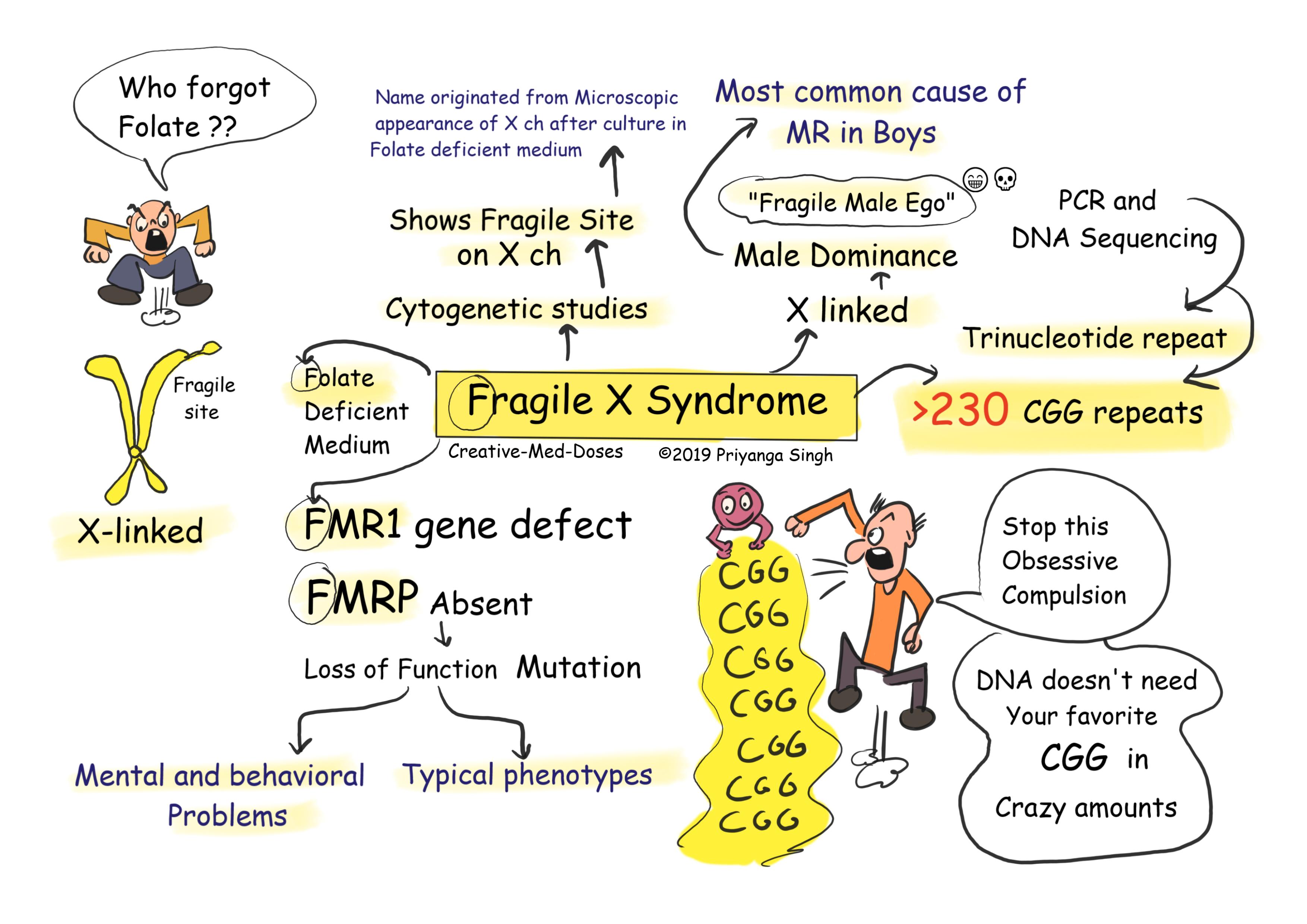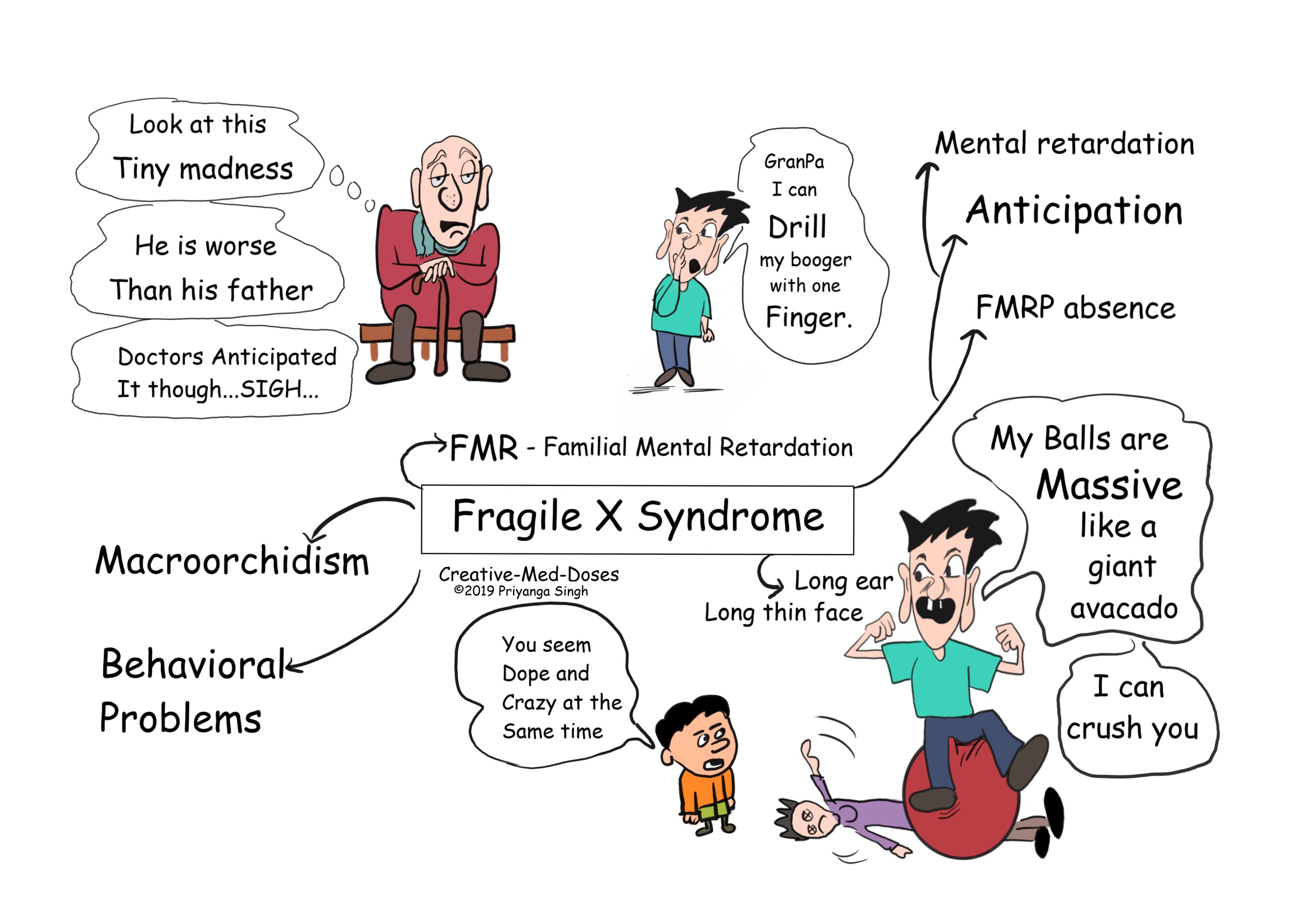Fragile X Syndrome: X linked MR
Fragile X syndrome is the disease in which mutation occurs in a long repeating sequence of three nucleotides. Fragile X syndrome results from a mutation in the FMR1 gene, which maps to Xq27.3. FMR1 gene codes for familial mental retardation protein (FMRP). When the number of trinucleotide repeats exceeds approximately 230, the gene becomes abnormally methylated. This causes absent FMRP leading to abnormal phenotype and mental problems.
...

...
It is X-linked disease, so it predominantly affects males. (remember it by one liner “Fragile male Ego” 😀🙂😋). This syndrome also has “anticipation” in which, clinical features of fragile X syndrome worsen with each successive generation, as if the mutation becomes increasingly deleterious with each successive generation. (Fragility is increasing in generations, it is easy to anticipate that grandsons are going to be dumber than the forefathers, no offense 😋💀). It is a genetically inherited condition, when one child in a family has Fragile X, there are multiple implications for the parents and brothers and sisters of that child and indeed for many other relatives of the family.
...

...
What is Fragile X
In cytogenetic studies when the cells are grown in folate-deficient medium, cells with trinucleotide repeat at FMR-1 gene region looked broken under microscope. This site was named as a “fragile” site – it looks as though it is broken off but not quite separated.
Signs and Symptoms
Boys who are affected almost always have some learning difficulties to severe handicap.
Behavior problems- include short attention span, distractibility, impulsiveness and over-activity. Shyness and social withdrawal are often seen in girls who may have difficulty in making friends.
Physical signs
- Macroorchidism (enlarged testicles)
- Low-set and enlarged ears
- Long thin face
- Flat feet
- Mitral valve prolapse
Subscribe and share with fellow medicohumans 😋😁....
Further knowing 😋https://youtu.be/afH4-_xFVmY
Revision for today https://creativemeddoses.com/topics-list/type-1-hypersensitivity-immediate/